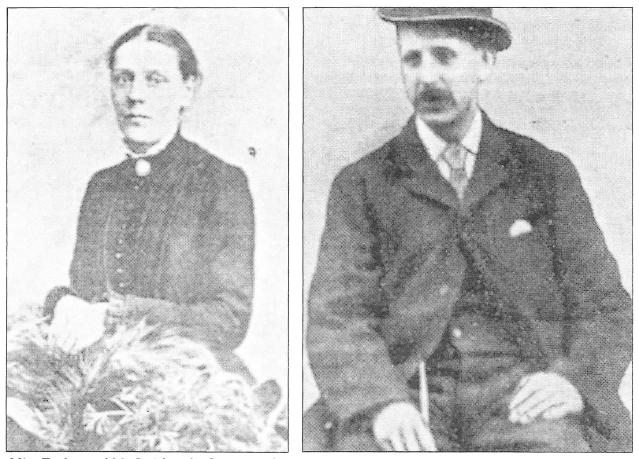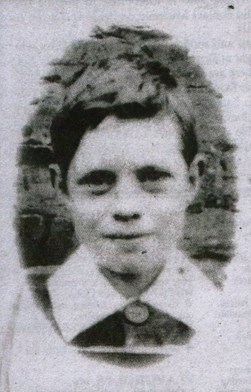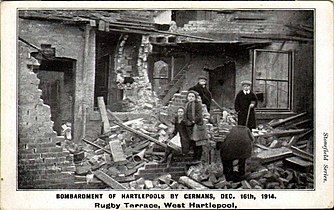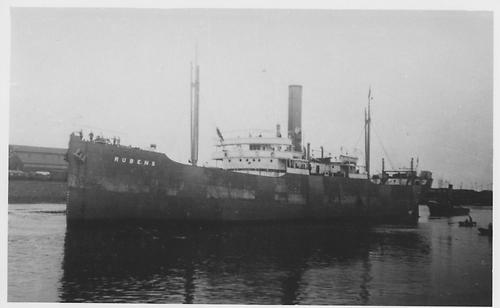
|
| Title: Zeppelin Attack | |
| historylovers > General > General Discussion | Go to subcategory: |
| Author | Content |
|
MarkUK
|
|
|
Date Posted:19/01/2022 07:02:39Copy HTML 107 years ago today, on 19 January 1915, German Zeppelins made the first bombing attack on England. Two Naval airships, the L3 and the L4 crossed the coast of north east Norfolk around 2000 hrs. The L3 turned south and bombed the minor naval port of Great Yarmouth. The L4 meandered along the north Norfolk coast, apparently lost, dropping a few bombs when it saw lights below until it came to the town of King's Lynn where the remainder of its load was dropped. Both Zeppelins made it safely back home unscathed. Two were killed and three injured in in Great Yarmouth while two were killed and 13 injured in King's Lynn. Great Yarmouth - Samuel Smith, 53 and Martha Taylor, 72 were killed by the same blast. He was standing outside his house in St Peter's Plain watching the airship overhead when a bomb landed just feet away, Miss Taylor had the misfortune to be walking past hurrying home at the same moment. King's Lynn - A string of bombs hit Bentinck St. Number 12, the home of the Goate family was wrecked, 14 year old Percy Goate was buried under the rubble, his parents and little sister survived. Next door the Fayers family were entertaining an guest, a 26 year old war widow Alice Gazley. They rushed outside to see what the noise was when the house behind them was hit and collapsed. Mrs Gazely was buried in the collapse. Below, the four victims, the first to die in an air raid on the UK.
You're playing chess with Fate and Fate's winning.
Arnold Bennett
|
|
|
tommytalldog
|
Share to:





 #1
#1
|
|
Re:Zeppelin Attack Date Posted:19/01/2022 08:44:01Copy HTML Mark, is this the same raid you severely chastised me for getting the wrong address? There was a plaque in as neighborhood yard indicated what I posted. |
|
|
MarkUK
|
Share to:





 #2
#2
|
|
Re:Zeppelin Attack Date Posted:19/01/2022 09:47:21Copy HTML Yes, not your fault, you were only going by what the Sheringham Local History Society mistakenly believed. The bombs on Sheringham came from the L4 about 10 minutes after the L3 bombed Great Yarmouth.
You're playing chess with Fate and Fate's winning.
Arnold Bennett
|
|
|
MarkUK
|
Share to:





 #3
#3
|
|
Re:Zeppelin Attack Date Posted:22/01/2022 02:26:57Copy HTML The first attack by the Germans against British soil came not from the air as expected but from the sea. On 16 December 1914 four battlecruisers and one armoured cruiser protected by 22 smaller ships headed across the North Sea for a raid on east coasts ports and towns. The true aim was to lure elements of the Grand Fleet out and overwhelm them with numbers. The Germans reached their target area unmolested and in three attacks lasting 90 minutes they bombarded the seaside resorts of Scarborough and Whitby and the industrial port of Hartlepool. 140 were killed, most of them in Hartlepool. No Royal Navy capital ships appeared on the scene to take them on, only four destroyers were in the area that morning, three turned away unable to get close enough to fire their torpedoes, only one HMS Doon carried out an attack firing a single torpedo which missed. The Doon was hit and forced to retreat. Hartlepool was defended by a shore battery of three guns and two scout cruisers and a submarine all of which were in port as the attack commenced. One of them HMS Patrol was able to sail out but was hit almost immediately and forced to return. Only the land based guns had any success, SMS Blücher was hit and eight German sailors were killed. Despite a chase by Royal Navy vessels the Germans made it safely back to port. The raid had cost the lives of 146 British. The attack caused outrage in the UK, not only against the Germans but against the Admiralty too. The largest and most powerful fighting fleet on earth had failed to stop the attack with no major vessels ever coming in sight of the Germans in what was supposed to be home waters.
You're playing chess with Fate and Fate's winning.
Arnold Bennett
|
|
|
tommytalldog
|
Share to:





 #4
#4
|
|
Re:Zeppelin Attack Date Posted:22/01/2022 03:27:31Copy HTML The first attack by the Germans against British soil came not from the air as expected but from the sea. On 16 December 1914 four battlecruisers and one armoured cruiser protected by 22 smaller ships headed across the North Sea for a raid on east coasts ports and towns. The true aim was to lure elements of the Grand Fleet out and overwhelm them with numbers. The Germans reached their target area unmolested and in three attacks lasting 90 minutes they bombarded the seaside resorts of Scarborough and Whitby and the industrial port of Hartlepool. 140 were killed, most of them in Hartlepool. No Royal Navy capital ships appeared on the scene to take them on, only four destroyers were in the area that morning, three turned away unable to get close enough to fire their torpedoes, only one HMS Doon carried out an attack firing a single torpedo which missed. The Doon was hit and forced to retreat. Hartlepool was defended by a shore battery of three guns and two scout cruisers and a submarine all of which were in port as the attack commenced. One of them HMS Patrol was able to sail out but was hit almost immediately and forced to return. Only the land based guns had any success, SMS Blücher was hit and eight German sailors were killed. Despite a chase by Royal Navy vessels the Germans made it safely back to port. The raid had cost the lives of 146 British. The attack caused outrage in the UK, not only against the Germans but against the Admiralty too. The largest and most powerful fighting fleet on earth had failed to stop the attack with no major vessels ever coming in sight of the Germans in what was supposed to be home waters.
In the early 1900's Churchill was reviewing the RN passing at Spithead (spelling) which numbered at 1,000 ships. Incredible numbers at the time & the above post would be a real stain on the prestige of the Admiralty. |
|
|
MarkUK
|
Share to:





 #5
#5
|
|
Re:Zeppelin Attack Date Posted:22/01/2022 05:55:11Copy HTML The first four months of the war were a mixed bag for the Royal Navy. Success in August in the North Sea in which three German light cruisers and a destroyer were sunk for no loss. Then in September the Royal Navy lost three armoured cruisers in less than 90 minutes to a single U-boat. In the south Pacific in November the Royal Navy lost two armoured cruisers with all hands to the German East Asia Squadron. Revenge followed in the south Atlantic in December when the two armoured cruisers and two light cruisers of the East Asia Squadron were sunk for no loss. You're playing chess with Fate and Fate's winning.
Arnold Bennett
|
|
|
MarkUK
|
Share to:





 #6
#6
|
|
Re:Zeppelin Attack Date Posted:23/01/2022 03:12:03Copy HTML I should say that the naval bombardment of 16 December 1914 was the first successful attack by the Germans against British soil. They had attempted it seven weeks earlier on 3 November. The aim (as it was on 16 December) was to draw out elements of the Grand Fleet, appear to retreat and lure them into German waters where the battleships would be waiting. The 3 November 1914 raid failed due to the fact that the raiders were spotted as they opened fire on the fishing port and minor naval base of Great Yarmouth. The few shells fired landed harmlessly on the beach before the Germans turned away in the expectation that they would be followed as planned. But in fact the capital ships were nowhere near, the smaller vessels the Germans saw did not attempt a pursuit. There was a brief exchange of fire with the British coming off worst with one ship hit and one sailor killed. There was further loss however, the submarine HMS D5 put out to sea but struck a mine, whether British or German was never established, and sank with the loss of 21 of her 25 crew. Also one of the German warships lurking off the German coast, the armoured cruiser SMS Yorck, struck a German mine the next day as it steered off course heading back to port, 336 were killed. Neither side was satisfied with the day's events, so the Germans tried again seven weeks later. You're playing chess with Fate and Fate's winning.
Arnold Bennett
|
|
|
MarkUK
|
Share to:





 #7
#7
|
|
Re:Zeppelin Attack Date Posted:19/02/2022 10:42:41Copy HTML 107 years ago today, on 19 February 1915, a German ship the Rubens sailed from Wilhelmshaven on a highly dangerous mission. So dangerous in fact that it flew the Danish flag and masqueraded as the Kronborg in the hope that as a neutral ship she would be able to avoid the British on her long voyage to Tanga in German East Africa. German East Africa was the last German colony to hold out against the British, but for that to continue it had to be resupplied with arms, ammunition and medical supplies. The Rubens was also loaded with vast amounts of coal, far more than she needed for the one way voyage, the coal was needed to replenish the bunkers of the cruiser Königsberg, stranded in the Rufiji delta, to enable her to return to European waters where she would be more useful. In the days before the Rubens set sail two Navy Zeppelins had been sent out to look for any British warships that might intercept her as she headed into the North Sea. The two Zeppelins, the L3 and the L4 never returned, both were caught in high winds and wrecked on the Danish coast, not an auspicious start for the German adventure. Against all the odds, as the British were aware of the Kronborg's true identity, she made it safely to East Africa in mid April. But just as she was approaching Tanga she was spotted by the Royal Navy cruiser HMS Hyacinth. But luck was with the Germans, one of the Hyacinth's engines broke down and the Rubens escaped. The disabled Hyacinth opened fire blind which gave the German commander of the Rubens the opportunity of a little subterfuge. He had a load of wood set alight on the deck in the hope that it would convince the British that she had been hit. The ruse worked, in part, the Hyacinth sailed away thinking they had sunk the German ship, but the fire on board proved impossible to extinguish and the Rubens exploded and sank after all her crew had got off. Nevertheless salvage began and a surprising amount of cargo was found to be intact including 5 million rounds of ammunition, 2000 rifles, 1000 shells and much of the coal. However before the coal could be fully salvaged for transfer to the stranded Königsberg the British returned in July and after being badly damaged the German cruiser sank. The supplies from the Rubens in part enabled the Germans to hold out for the remainder of the war, those plus supplies captured from the Portuguese who entered the war in 1916. The German Army in East Africa was in fact the last to surrender in November 1918 two weeks after the armistice in Europe. The wreck of the Rubens was raised in 1956, patched up and towed to Dar-es-Salaam in British Tanganyika for scrapping. The remaining coal was salvaged and sold to East African Railways a full 41 years after it had arrived.
You're playing chess with Fate and Fate's winning.
Arnold Bennett
|
|
|
tommytalldog
|
Share to:





 #8
#8
|
|
Re:Zeppelin Attack Date Posted:19/02/2022 12:20:42Copy HTML 107 years ago today, on 19 February 1915, a German ship the Rubens sailed from Wilhelmshaven on a highly dangerous mission. So dangerous in fact that it flew the Danish flag and masqueraded as the Kronborg in the hope that as a neutral ship she would be able to avoid the British on her long voyage to Tanga in German East Africa. German East Africa was the last German colony to hold out against the British, but for that to continue it had to be resupplied with arms, ammunition and medical supplies. The Rubens was also loaded with vast amounts of coal, far more than she needed for the one way voyage, the coal was needed to replenish the bunkers of the cruiser Königsberg, stranded in the Rufiji delta, to enable her to return to European waters where she would be more useful. In the days before the Rubens set sail two Navy Zeppelins had been sent out to look for any British warships that might intercept her as she headed into the North Sea. The two Zeppelins, the L3 and the L4 never returned, both were caught in high winds and wrecked on the Danish coast, not an auspicious start for the German adventure. Against all the odds, as the British were aware of the Kronborg's true identity, she made it safely to East Africa in mid April. But just as she was approaching Tanga she was spotted by the Royal Navy cruiser HMS Hyacinth. But luck was with the Germans, one of the Hyacinth's engines broke down and the Rubens escaped. The disabled Hyacinth opened fire blind which gave the German commander of the Rubens the opportunity of a little subterfuge. He had a load of wood set alight on the deck in the hope that it would convince the British that she had been hit. The ruse worked, in part, the Hyacinth sailed away thinking they had sunk the German ship, but the fire on board proved impossible to extinguish and the Rubens exploded and sank after all her crew had got off. Nevertheless salvage began and a surprising amount of cargo was found to be intact including 5 million rounds of ammunition, 2000 rifles, 1000 shells and much of the coal. However before the coal could be fully salvaged for transfer to the stranded Königsberg the British returned in July and after being badly damaged the German cruiser sank. The supplies from the Rubens in part enabled the Germans to hold out for the remainder of the war, those plus supplies captured from the Portuguese who entered the war in 1916. The German Army in East Africa was in fact the last to surrender in November 1918 two weeks after the armistice in Europe. The wreck of the Rubens was raised in 1956, patched up and towed to Dar-es-Salaam in British Tanganyika for scrapping. The remaining coal was salvaged and sold to East African Railways a full 41 years after it had arrived.
A truly remarkable story of which I had never heard. That part of WWI is mostly forgotten over here & has always been of great interest to me. The classic movie "African Queen" was a tale about WWI in east Africa & name given to the German ship in the movie "Louisa." |
|
|
MarkUK
|
Share to:





 #9
#9
|
|
Re:Zeppelin Attack Date Posted:19/02/2022 01:41:20Copy HTML Both the film The African Queen and the novel are based on the events of 1915 and the sinking of the Königsberg. Both differ greatly from actual events of course. I've never read the novel and it's many years since I've watched the film, so I doubt if the story of the Rubens features in either. The Rubens was actually a captured British ship launched in 1906 and interned at Hamburg at the outbreak of war in August 1914. Interestingly the German ship in the film is named the Königin Luise. That was the name of the first German ship sunk by the British in World War I. Before the war she was a ferry before being requisitioned and converted into a minelayer. On the evening war was declared, 4 August, she laid a number of mines off the Thames estuary, but the following morning she was spotted and sunk by the light cruiser HMS Amphion, 54 of her crew of 100 were killed. She was sunk just 13½ hours after war had been declared. I find the colonial, sea war and air war more interesting than the huge battles on the Western Front, they're just too massive and horrific to get my head around. You're playing chess with Fate and Fate's winning.
Arnold Bennett
|
|
|
tommytalldog
|
Share to:





 #10
#10
|
|
Re:Zeppelin Attack Date Posted:19/02/2022 03:00:21Copy HTML Yes, once again artistic license over historical content, but the Louisa was sunk through the efforts of Charlie Allnut & Rose Sayer. So once again the good guys win out in the end. About the colonial wars of GB & my hero Winnie. He was very much a Victorian & the white race's duty to the subject mud people. When you fast forward to the 1930s & dominion status for the former empire, he was all for the white dominated like Australia & Canada, but dead set against the same for India. He viewed the Indians an incapable of governing themselves & Gandhi as thuggish riff raff. Live respected, die regretted
|












